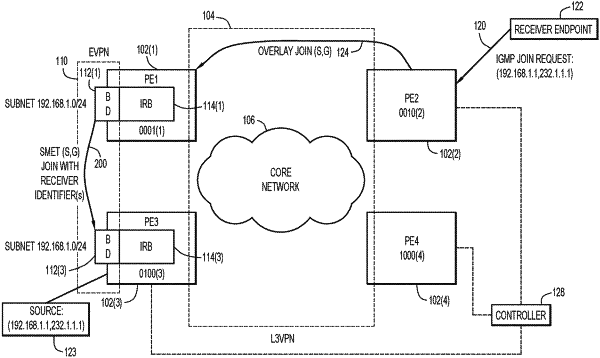| CPC H04L 12/185 (2013.01) [H04L 12/4641 (2013.01); H04L 45/16 (2013.01); H04L 45/74 (2013.01); H04L 47/724 (2013.01); H04L 63/0272 (2013.01)] | 16 Claims |

|
1. In a networking environment that includes at least a first node and a second node configured as Ethernet Virtual Private Networking (EVPN) peers of each other on an EVPN subnet across a core network, a method performed by the first node comprising:
receiving a multicast join request from a receiver endpoint, the multicast join request including a source address and a multicast group address of a source of a multicast stream;
constructing a Selective Multicast Ethernet Tag (SMET) EVPN control plane message, the SMET EVPN control plane message including an Internet Group Management Protocol (IGMP) membership report corresponding to the multicast join request and a receiver identifier corresponding to a second node; and
transmitting the SMET EVPN control plane message to a third node.
|